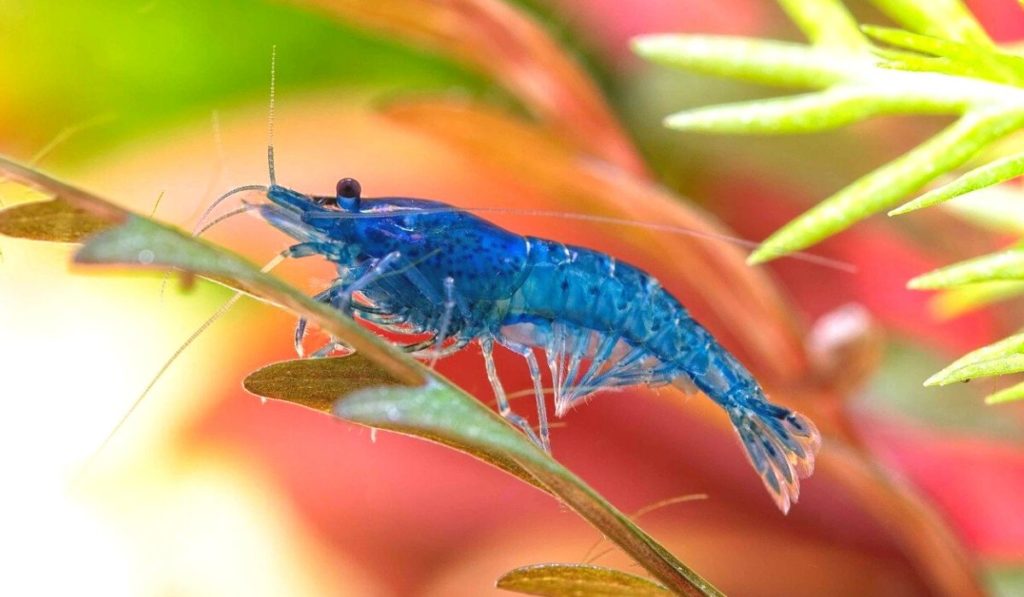Varieties Of Freshwater Aquarium Shrimp

Aquarists have discovered that freshwater aquarium shrimp can match the beauty of freshwater aquarium fish. They also come in different color combinations and sizes. As a hobby, they are not time-consuming and give the same joy the fish give. They have become part of one of the greatest hobbies in the world and have established a solid place within the fish community of thousands of tanks around the world. Now they are being sold at pet stores like any other type of fish.
Takashi Amano, a Japanese aquarist, introduced a shrimp variety known as the Yamato Numa Ebi in the 1980s. Also known as the “Japanese marsh shrimp” and “Amano shrimp”, they are more colorful than other freshwater aquarium shrimp. Their color combinations are light brown to reddish-brown. They can get as large as 2 inches when fully grown and prefer to eat soft algae. They are sensitive to high levels of ammonia but can tolerate high alkalinity. Coming from a temperate region, they only thrive in water temperatures ranging from 30 C and below. They are known to eat fish food if algae is not readily available.
Another popular variety is the Cherry shrimp which originated from Taiwan. The most sought-after variation of this type is the Red Cherry shrimp which was bred in Germany. They were brought to the United States in the 1990s. The Red Cherry shrimp have care requirements almost the same as the Amano shrimp. They are the same in size and eating habits. Known in the scientific circles as Neocaridina denticulata Sinensis, Cherry shrimp are non-aggressive. They are very active and spend most of the time grazing on plant leaves and the bottom of the tank for algae.
A known and somewhat popular kind is the Bee shrimps who have also become known as Bumble Bee shrimp. These small freshwater shrimp came from Hong Kong. They grow slowly and only grow to 1 inch in adulthood. Unlike the Amano shrimp and Cherry shrimp, they are not good algae eaters. They consume vegetable matter and soft mosses. In water temperatures between 22 to 25 degrees, they do very well, and a water ph of 7.5 and the water should be free of any ammonia. Bumble Bee shrimp can reproduce 12 times a year if their habitat is properly maintained. They reach adulthood in half a year and can live to almost one and a half years.
There are large, long-arm shrimp that are preferred by some aquarists but they are known to be aggressive. With their chelipeds, they can catch small fish and other small pets within the tank. The Indian whisker shrimp is one of these species. They also require bigger tanks compared to their smaller counterparts. They must be isolated from smaller shrimp and fish because they may cause disruptions in the habitat.
In caring for freshwater aquarium shrimp, it must be considered that with their size, isolating them would be a good idea. They must be kept in a separate tank because small shrimp are at risk of being eaten by freshwater fish. Avoiding ammonia is also a main consideration and it can be done by selecting a 10-gallon tank. A smaller tank can not give the water quality the shrimp need. They are more sensitive than freshwater fish to water conditions. They can be easily killed by accumulated amounts of ammonia.
For biological filtration, an air-driven sponge filter is one of the better options. Cherry shrimp and a few others like the fine grains of silica sand and the like, as the substrate for the bottom of their fish tank home. Java moss could be a great addition to the tank. It has been observed that shrimp are more active and productive having Java moss because it does not drastically compete with them in nutrients. Pellets and flakes are good for feeding shrimp but the shrimp will do better with other foods more to their liking. It is better to give them the amount they can consume in a few minutes. Putting excess food in the tank can affect water quality and may endanger the shrimp.
Water quality must be monitored constantly because the slightest changes in its condition have an immediate adverse effect on the shrimp. The water temperature must be maintained at 25ºC and a maximum of 30ºC. Always use a de-chlorinator and ammonia neutralizer to reduce the levels of chlorine and ammonia in the tank, and keep them really low to prevent any harm to your shrimp. Toxins must be eliminated from the aquarium on the weekly basis to protect the live shrimp in the tank and should be done on a weekly schedule and in stages of around 30 percent of the water per water change.
The health of the shrimp can be judged by their behavior in the water. They are healthy if they constantly move and look for food. They never hold still unless they drop their shell in the course of growing. As their new shell hardens in about two days, they stay hidden because in this condition they are vulnerable to predators, especially in a community tank. Maintaining the parameters of their habitat will ensure their health and longer life span. New and improved ways of caring for them are being discovered as more people appreciate them as part of this hobby.

